
Vieques: The Hidden Gem of Puerto Rico
Discover Vieques, Puerto Rico's tranquil island paradise, known for its bioluminescent bay, unspoiled beaches, and rich cultural heritage.
Vieques, a small island off the eastern coast of Puerto Rico, is a paradise waiting to be explored. Known for its pristine beaches, lush landscapes, and vibrant culture, this hidden gem offers a unique blend of natural beauty and rich history. The island remains largely untouched by commercial tourism, making it an ideal destination for those seeking tranquility and adventure. Visitors to Vieques can explore the stunning Mosquito Bay, home to one of the world's brightest bioluminescent bays. At night, the waters come alive with a magical blue glow, an experience that is truly unforgettable. The island is also home to the Vieques National Wildlife Refuge, which encompasses over 3,100 acres of diverse ecosystems, from mangroves to coral reefs, providing ample opportunities for hiking, snorkeling, and bird-watching. The local culture in Vieques is warm and inviting, with a strong sense of community and tradition. The island's towns, Isabel Segunda and Esperanza, offer a glimpse into the local way of life, with charming streets, colorful buildings, and delicious Puerto Rican cuisine. Don't miss the chance to try fresh seafood at one of the many beachside restaurants or enjoy a refreshing piña colada while watching the sunset over the Caribbean Sea.
Local tips in Vieques
- Rent a car or golf cart to explore the island; public transportation is limited.
- Visit Mosquito Bay on a moonless night for the best bioluminescent experience.
- Pack reef-safe sunscreen to protect the delicate marine ecosystems.
- Try to learn a few Spanish phrases; locals appreciate the effort and it enhances your experience.
- Bring cash, as some smaller establishments may not accept credit cards.
Vieques: The Hidden Gem of Puerto Rico
Vieques, a small island off the eastern coast of Puerto Rico, is a paradise waiting to be explored. Known for its pristine beaches, lush landscapes, and vibrant culture, this hidden gem offers a unique blend of natural beauty and rich history. The island remains largely untouched by commercial tourism, making it an ideal destination for those seeking tranquility and adventure. Visitors to Vieques can explore the stunning Mosquito Bay, home to one of the world's brightest bioluminescent bays. At night, the waters come alive with a magical blue glow, an experience that is truly unforgettable. The island is also home to the Vieques National Wildlife Refuge, which encompasses over 3,100 acres of diverse ecosystems, from mangroves to coral reefs, providing ample opportunities for hiking, snorkeling, and bird-watching. The local culture in Vieques is warm and inviting, with a strong sense of community and tradition. The island's towns, Isabel Segunda and Esperanza, offer a glimpse into the local way of life, with charming streets, colorful buildings, and delicious Puerto Rican cuisine. Don't miss the chance to try fresh seafood at one of the many beachside restaurants or enjoy a refreshing piña colada while watching the sunset over the Caribbean Sea.
When is the best time to go to Vieques?
Iconic landmarks you can’t miss
Caracas Beach
Experience the serenity of Caracas Beach in Vieques, where turquoise waters meet white sands for the ultimate tropical escape.

Black Sand Beach
Explore the mesmerizing Black Sand Beach in Vieques, Puerto Rico – a stunning natural beauty with unique volcanic sands and vibrant marine life.
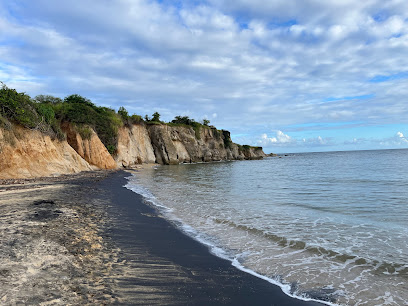
Vieques National Wildlife Refuge
Explore the breathtaking landscapes and rich biodiversity of Vieques National Wildlife Refuge, a serene haven for nature lovers and adventurers alike.
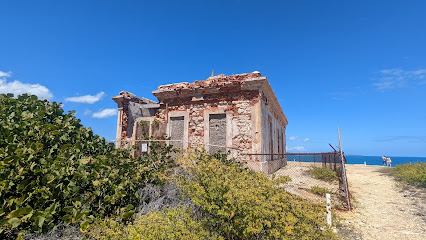
Sun Bay Beach
Discover the serene beauty of Sun Bay Beach in Vieques, Puerto Rico, where golden sands and turquoise waters await your perfect beach getaway.
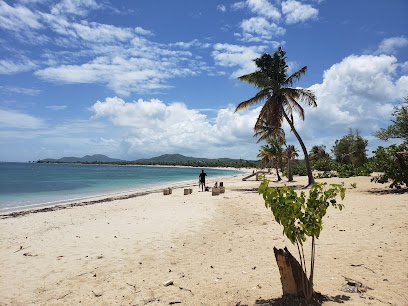
Parque de la Ceiba de Vieques Reserva Natural
Explore the serene Parque de la Ceiba de Vieques, a natural reserve rich in history and breathtaking landscapes, perfect for nature lovers and history enthusiasts.

El Fortin de Conde Mirasol Museum
Explore the rich history and culture of Vieques at El Fortin de Conde Mirasol Museum, an essential stop for every traveler.

Abe's Snorkeling & Biobay Tours
Experience the beauty of Vieques with Abe's Snorkeling & Biobay Tours, offering unforgettable underwater adventures and magical bioluminescent bays.

Jak Water Sports Bioluminescent Bay Tour & Rental
Discover the enchanting bioluminescent bay of Vieques with Jak Water Sports, offering unforgettable rentals and guided tours in a breathtaking natural setting.

Malecón House
Experience the charm and serenity of Malecón House in Vieques, your gateway to picturesque beaches and Caribbean adventures.

Secret Beach
Discover the serene beauty of Secret Beach in Vieques, Puerto Rico — a hidden gem with pristine sands and crystal-clear waters.

Playa La Chiva
Experience the untouched beauty of Playa La Chiva, Vieques' pristine beach with soft sands, crystal-clear waters, and unforgettable sunsets.
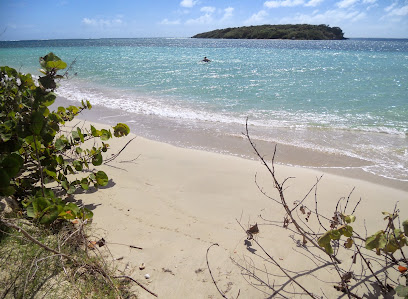
Puerto Mosquito Bioluminescent Bay
Experience the magical glow of Puerto Mosquito Bioluminescent Bay, a natural wonder in Vieques that illuminates the night with breathtaking bioluminescence.
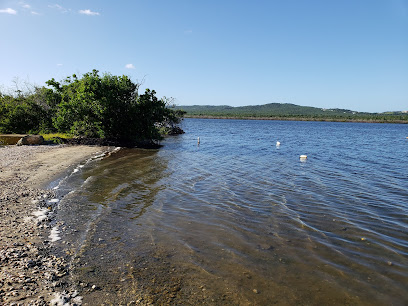
Mosquito Pier
Explore the tranquil beauty and vibrant culture at Mosquito Pier, a must-visit attraction in Vieques, Puerto Rico.

Sea Glass Beach
Explore the enchanting Sea Glass Beach in Vieques, where colorful sea glass meets stunning Caribbean landscapes for an unforgettable beach experience.
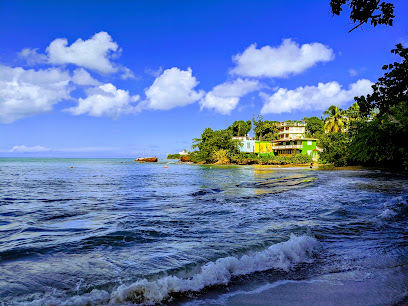
Bahía del Sol State Park
Experience the natural beauty and tranquility of Bahía del Sol State Park in Vieques, a perfect escape for nature lovers and adventure seekers alike.

Unmissable attractions to see
Carabalí Rainforest Park
Experience the thrill of adventure and the beauty of nature at Carabalí Rainforest Park in Luquillo, Puerto Rico, where excitement meets breathtaking landscapes.

Snorkeling Puerto Rico | Boat Tours
Discover unforgettable snorkeling adventures in Fajardo with Snorkeling Puerto Rico, where vibrant marine life meets breathtaking coastal beauty.

East Island Excursions
Discover the breathtaking beauty of Puerto Rico's coastline with East Island Excursions, your gateway to adventure and relaxation on the water.

Liquillo Beach
Discover the breathtaking beauty of Luquillo Beach, Puerto Rico's coastal gem known for its golden sands, vibrant atmosphere, and rich local culture.

Torre Yokahú
Discover stunning panoramic views at Torre Yokahú, the premier observation deck in El Yunque National Forest, Puerto Rico's lush tropical paradise.

El Portal de El Yunque Visitor Center - El Yunque National Forest
Explore El Portal de El Yunque Visitor Center for an unforgettable journey into Puerto Rico's lush tropical rainforest and rich cultural heritage.
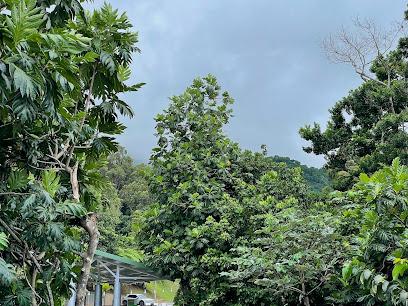
Rainforest Zipline Park
Experience the thrill of ziplining through the lush canopies of Puerto Rico's Rainforest Zipline Park, an unforgettable adventure amidst stunning natural beauty.

Flamenco Beach
Experience the unparalleled beauty of Flamenco Beach in Culebra, Puerto Rico – a top-rated tropical paradise with stunning sands and vibrant waters.

Charco El Hippie
Explore the enchanting Charco El Hippie, a stunning nature preserve in Naguabo, Puerto Rico, where crystal-clear waters meet lush tropical landscapes.

Marina Puerto Chico
Experience the vibrant beauty of Marina Puerto Chico in Fajardo, a hub for adventure and relaxation on the stunning Caribbean coast of Puerto Rico.

Junglequi Zipline Park
Soar through the treetops at Junglequi Zipline Park, where adventure meets the breathtaking beauty of Puerto Rico's rainforest.

Seven Seas Beach
Discover the serene beauty of Seven Seas Beach in Las Croabas, Puerto Rico - a tropical paradise perfect for relaxation and adventure.

Safe Harbor Puerto Del Rey
Experience the ultimate maritime adventure at Safe Harbor Puerto Del Rey, Puerto Rico's premier marina, known for its stunning views and top-notch services.

Zoni Beach
Discover the unspoiled beauty of Zoni Beach in Culebra, Puerto Rico, where crystal-clear waters meet soft sands, creating a perfect tropical getaway.

Vieques National Wildlife Refuge
Explore the natural wonders of Vieques National Wildlife Refuge, a sanctuary for wildlife and a paradise for nature lovers in Puerto Rico.

Essential places to dine
Duffy's Esperanza
Discover the vibrant flavors of Vieques at Duffy's Esperanza – where delicious food meets a lively Caribbean atmosphere.

Bananas
Experience vibrant flavors at Bananas in Esperanza, Vieques – a culinary haven blending local freshness with Caribbean charm.
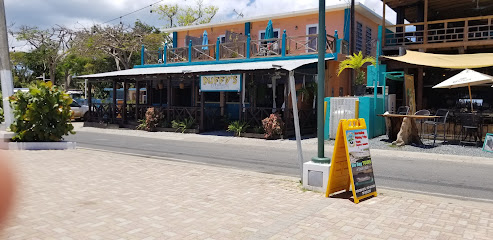
Lazy Jacks
Discover authentic Puerto Rican flavors at Lazy Jacks in Vieques – where culinary delights meet island charm.

Biekes Bistro
Discover authentic Caribbean cuisine at Biekes Bistro in Vieques - a must-visit culinary destination for all food lovers.

Rising Roost / Guake’te
Experience the authentic flavors of Puerto Rico at Rising Roost in Vieques - where local cuisine meets vibrant ambiance.

Coqui Fire Cafe
Experience authentic Mexican flavors at Coqui Fire Cafe in Vieques - where delicious food meets warm hospitality.

Mama Mia
Experience delightful culinary creations at Mama Mia in Vieques – where local ingredients meet international flair.

Bili
Experience the vibrant flavors of Nuevo Latino cuisine at Bili in Vieques, where every dish celebrates local culture and fresh ingredients.

D’Frozz
Experience delightful breakfasts at D’Frozz in Vieques, where every bite is a taste of island bliss.

Tin Box Vieques Resturant and Bar
Discover authentic Puerto Rican cuisine at Tin Box Restaurant and Bar in Vieques - where every meal is a celebration of flavor.

Buga’s Mexican Restaurant
Experience authentic Mexican cuisine at Buga's Mexican Restaurant in Vieques - where vibrant flavors meet a warm atmosphere.

The Mar Azul
Discover culinary delights at The Mar Azul in Vieques—where grilled flavors meet vibrant island vibes.

El Quenepo Vieques
Experience exquisite Caribbean cuisine at El Quenepo Vieques, where every dish is crafted from the freshest local ingredients.

Rancho Choli
Experience authentic Puerto Rican cuisine at Rancho Choli in Vieques - where every meal tells a story.

Trade Winds Bar & Restaurant, Guest House & Gift Shop
Experience culinary delights and local charm at Trade Winds Bar & Restaurant - your gateway to Vieques' vibrant culture.

Markets, malls and hidden boutiques
Trade Winds Bar & Restaurant, Guest House & Gift Shop
Experience the vibrant flavors and warm hospitality of Vieques at Trade Winds Bar & Restaurant, your go-to spot for local cuisine and unique gifts.
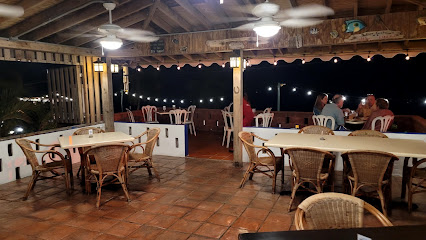
Superdescuentos Morales Market
Experience the local flavors and vibrant culture at Superdescuentos Morales Market, the go-to supermarket in Vieques for fresh produce and local delicacies.

Supermercado Morales
Explore local flavors and essentials at Supermercado Morales, the premier grocery store in Vieques for tourists seeking quality and convenience.

The Green Store
Discover the charm of Vieques at The Green Store, your go-to grocery destination for local delights and beach essentials.

ROSAS DEPOT LLC
Explore the essential hardware store of Vieques, Rosas Depot LLC, where local charm meets quality supplies for every project.

Colmado el Mambo General Store
Explore the vibrant Colmado el Mambo General Store in Vieques for unique local products and a taste of Puerto Rican culture.

Colmado El Encanto
Experience the vibrant local culture at Colmado El Encanto, Vieques' beloved supermarket for fresh produce and Puerto Rican delicacies.

Marshmallow Candy & Coffee
Discover the sweet side of Vieques at Marshmallow Candy & Coffee, where handmade treats and local flavors create a delightful experience.

El Sombrero Viejo
Discover the vibrant atmosphere and local flavors at El Sombrero Viejo, Vieques' beloved bar and liquor store, perfect for relaxation and socializing.

Family Market Vieques Centro Ahorros
Uncover the local flavors and essentials at Family Market Vieques Centro Ahorros, your go-to grocery store in Vieques.

Luna Loca Art Gallery & Gift Shop
Discover a vibrant collection of local art, unique gifts, and handcrafted souvenirs at Luna Loca Art Gallery & Gift Shop in Vieques.

Colmado Robin
Discover local flavors and friendly service at Colmado Robin, the essential grocery store in Esperanza, Vieques.

Limbers
Experience the tropical flavors of Vieques at Limbers, a beloved ice cream shop offering delicious, handcrafted treats in a vibrant setting.

Vieques Gifts
Explore Vieques Gifts: A treasure trove of unique, locally crafted souvenirs and art that embodies the vibrant culture of Vieques Island.

Comercial Florida
Discover quality tools and materials at Comercial Florida, the go-to hardware store in Vieques, Puerto Rico, perfect for all your DIY needs.

Essential bars & hidden hideouts
Duffy's Esperanza
Experience the vibrant flavors of the Caribbean at Duffy's Esperanza, Vieques' top spot for grilled specialties and refreshing cocktails.
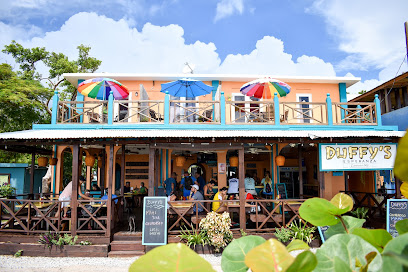
Bananas
Explore the vibrant flavors of Caribbean cuisine at Bananas in Esperanza, Vieques—where fresh ingredients meet a lively atmosphere.

Lazy Jacks
Discover the vibrant flavors of Vieques at Lazy Jacks, where fresh seafood meets island charm in a perfect dining experience.

Biekes Bistro
Experience the vibrant flavors of Caribbean cuisine at Biekes Bistro, a must-visit destination in Vieques, Puerto Rico.
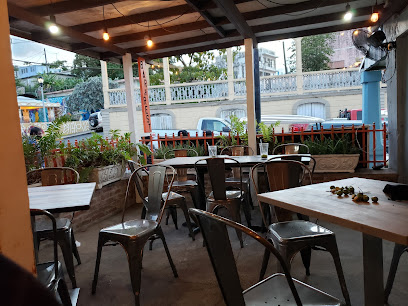
Coqui Fire Cafe
Discover the rich flavors of Mexican cuisine at Coqui Fire Cafe, a vibrant culinary haven in the heart of Vieques, Puerto Rico.

Tin Box Vieques Resturant and Bar
Experience the vibrant flavors of Vieques at Tin Box Restaurant and Bar, where every meal is a celebration of local cuisine and stunning outdoor views.

The Mar Azul
Experience the vibrant atmosphere and exquisite flavors of The Mar Azul, a beloved grill and bar overlooking the stunning Vieques coastline.
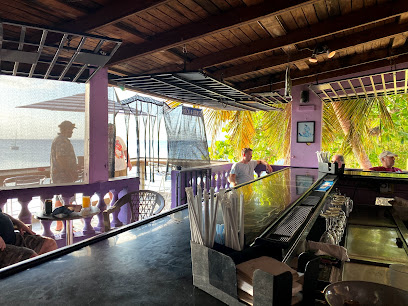
El Quenepo Vieques
Experience the vibrant flavors of the Caribbean at El Quenepo Vieques, a culinary gem offering fresh, local dishes in a charming atmosphere.
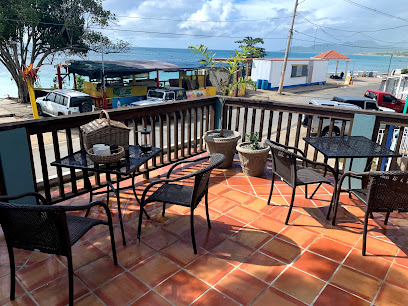
Trade Winds Bar & Restaurant, Guest House & Gift Shop
Discover Caribbean flavors and warm hospitality at Trade Winds Bar & Restaurant in Vieques, your ideal destination for relaxation and culinary delight.

El Yate
Discover El Yate in Vieques: A delightful restaurant blending local flavors and a vibrant atmosphere, perfect for an unforgettable dining experience.

Robin’s Mojito Bar & Grill
Discover the essence of Vieques at Robin's Mojito Bar & Grill, where grilled delights meet refreshing mojitos in a tropical paradise.

Mango Taphouse and Gastropub
Discover the vibrant flavors of Vieques at Mango Taphouse and Gastropub, where local ingredients meet creative culinary artistry.

El Plaza Vieques
Experience the best of Puerto Rican cuisine at El Plaza Vieques, where local flavors meet an inviting ambiance, perfect for any dining occasion.

El Sombrero Viejo
Discover the vibrant spirit of Vieques at El Sombrero Viejo, a charming bar offering local drinks and a friendly atmosphere.

Bar La Nasa
Experience the vibrant nightlife and local culture at Bar La Nasa in Vieques, where refreshing cocktails and live music await.

Local Phrases
-
- HelloHola
[oh-lah] - GoodbyeAdiós
[ah-dee-ohs] - YesSí
[see] - NoNo
[noh] - Please/You're welcomePor favor/De nada
[por fah-bor/deh nah-dah] - Thank youGracias
[grah-see-ahs] - Excuse me/SorryPerdón/Lo siento
[pair-dohn/loh see-ehn-toh] - How are you?¿Cómo estás?
[koh-moh ehs-tahs] - Fine. And you?Bien. ¿Y tú?
[byen. ee too] - Do you speak English?¿Hablas inglés?
[ah-blahs een-glehs] - I don't understandNo entiendo
[noh ehn-tee-ehn-doh]
- HelloHola
-
- I'd like to see the menu, pleaseMe gustaría ver el menú, por favor
[meh goo-stah-ree-ah ver ehl meh-noo, por fah-bor] - I don't eat meatNo como carne
[noh koh-moh kahr-neh] - Cheers!¡Salud!
[sah-lood] - I would like to pay, pleaseMe gustaría pagar, por favor
[meh goo-stah-ree-ah pah-gar, por fah-bor]
- I'd like to see the menu, pleaseMe gustaría ver el menú, por favor
-
- Help!¡Ayuda!
[ah-yoo-dah] - Go away!¡Vete!
[veh-teh] - Call the Police!¡Llama a la Policía!
[yah-mah ah lah poh-lee-see-ah] - Call a doctor!¡Llama a un médico!
[yah-mah ah oon meh-dee-koh] - I'm lostEstoy perdido/a
[ehs-toy pair-dee-doh/ah] - I'm illEstoy enfermo/a
[ehs-toy ehn-fehr-moh/ah]
- Help!¡Ayuda!
-
- I'd like to buy...Me gustaría comprar...
[meh goo-stah-ree-ah kohm-prahr] - I'm just lookingSolo estoy mirando
[soh-loh ehs-toy mee-rahn-doh] - How much is it?¿Cuánto cuesta?
[kwan-toh kwehs-tah] - That's too expensiveEso es muy caro
[eh-soh ehs moo-ee kah-roh] - Can you lower the price?¿Puedes bajar el precio?
[pweh-dehs bah-har ehl pree-syoh]
- I'd like to buy...Me gustaría comprar...
-
- What time is it?¿Qué hora es?
[keh oh-rah ehs] - It's one o'clockEs la una en punto
[ehs lah oo-nah ehn poon-toh] - Half past (10)Las diez y media
[lahs d'yehs ee meh-dee-ah] - MorningMañana
[mah-nyah-nah] - AfternoonTarde
[tahr-deh] - EveningNoche
[noh-cheh] - YesterdayAyer
[ah-yehr] - TodayHoy
[oy] - TomorrowMañana
[mah-nyah-nah] - 1Uno
[oo-noh] - 2Dos
[dohs] - 3Tres
[trehs] - 4Cuatro
[kwah-troh] - 5Cinco
[seen-koh] - 6Seis
[says] - 7Siete
[see-eh-teh] - 8Ocho
[oh-choh] - 9Nueve
[nweh-veh] - 10Diez
[d'yehs]
- What time is it?¿Qué hora es?
-
- Where's a/the...?¿Dónde está...?
[dohn-deh ehs-tah] - What's the address?¿Cuál es la dirección?
[kwal ehs lah dee-rehk-syohn] - Can you show me (on the map)?¿Puedes mostrarme (en el mapa)?
[pweh-dehs mohs-trar-meh (ehn ehl mah-pah)] - When's the next (bus)?¿Cuándo es el próximo (autobús)?
[kwan-doh ehs ehl proh-ksy-moh (ow-toh-boos)] - A ticket (to ....)Un boleto (a ....)
[oon boh-leh-toh (ah)]
- Where's a/the...?¿Dónde está...?
History of Vieques
-
Vieques, known to the Taino people as 'Bieke' or 'Small Island', has a rich indigenous history. The Tainos were the original inhabitants of Vieques, and their legacy can still be felt today through archaeological sites and the island's cultural traditions. The Tainos lived in harmony with nature, cultivating crops like cassava and fishing in the abundant waters surrounding the island.
-
In the late 15th century, Spanish explorers arrived in Vieques, leading to a period of colonization. The island's strategic location made it a valuable asset for Spain, which established sugar plantations and brought African slaves to work on them. The Spanish influence is evident in the island's architecture, language, and customs, which blend with the indigenous heritage to create a unique cultural tapestry.
-
During the 17th and 18th centuries, Vieques became a notorious haven for pirates. The island's secluded coves and bays provided perfect hiding spots for pirate ships. Famed pirates like Roberto Cofresí are said to have used Vieques as a base for their operations, adding a layer of swashbuckling adventure to the island’s history.
-
In the mid-19th century, Vieques experienced a brief period of Danish control. The Danish West India and Guinea Company established a settlement on the island, contributing to its diverse cultural heritage. Although the Danish presence was short-lived, it left an imprint on the island’s architecture and place names.
-
In 1941, the United States Navy established a significant presence on Vieques, using the island for military training and munitions testing. This military activity had a profound impact on the island's environment and its residents. Protests and activism by the local population eventually led to the Navy ceasing operations in 2003. The legacy of this period is still visible today, with many former military sites now being reclaimed by nature and serving as reminders of the island's complex history.
-
Since the departure of the U.S. Navy, Vieques has undergone significant ecological restoration. The island is home to the Vieques National Wildlife Refuge, one of the largest wildlife refuges in the Caribbean. Efforts to clean up and restore the environment have been ongoing, transforming former military lands into thriving ecosystems that attract nature lovers from around the world.
-
Vieques has seen a resurgence in cultural pride and community initiatives aimed at preserving its unique heritage. Festivals, art exhibitions, and community projects celebrate the island's Taino roots, African influences, and colonial history. The island’s cultural revival is a testament to the resilience and creativity of its people, making Vieques a vibrant and dynamic destination.
Vieques Essentials
-
Vieques, a small island off the eastern coast of Puerto Rico, is accessible by both air and sea. The most convenient way to get there is by flying from San Juan's Luis Muñoz Marín International Airport (SJU) to Vieques' Antonio Rivera Rodríguez Airport (VQS), with flights typically lasting about 30 minutes. Alternatively, you can take a ferry from the town of Ceiba on the Puerto Rican mainland; the ferry ride takes approximately 1.5 hours. Ferries run several times a day, but schedules can be subject to change, so it's advisable to check in advance.
-
Once in Vieques, transportation options include car rentals, publicos (shared vans), taxis, and scooters. Renting a car is highly recommended for exploring the island, as public transportation is limited. Keep in mind that some of the roads can be rough, so a vehicle with good clearance is preferable. Bicycles are also available for rent and can be a fun way to explore the more accessible areas.
-
The official currency in Vieques is the U.S. Dollar (USD). Credit cards are widely accepted in most hotels, restaurants, and shops. However, it's a good idea to carry some cash, especially in more remote areas and smaller establishments. There are a few ATMs on the island, but they can run out of cash quickly, especially on weekends and holidays, so plan accordingly.
-
Vieques is generally considered safe for tourists, but common-sense precautions are advised. Avoid leaving personal belongings unattended and be cautious in less populated areas, especially after dark. There have been occasional reports of petty theft, particularly in the more remote beach areas. It's always a good idea to stay aware of your surroundings and avoid isolated spots.
-
In case of emergency, dial 911 for immediate assistance. The island has a small hospital, Centro de Salud de Vieques, for medical emergencies and several pharmacies for minor health issues. It's recommended to have travel insurance that covers medical emergencies. Be aware that medical facilities are limited, so for serious conditions, you may need to be transported to the mainland.
-
Fashion: Do wear casual, comfortable clothing suitable for a tropical climate. Lightweight, breathable fabrics are best. Avoid wearing overly revealing clothing, especially in town. Religion: Do respect local customs and traditions, though Vieques is generally laid-back with no strict religious dress codes. Public Transport: Do be patient with the limited public transportation options. Don't expect fixed schedules; times can be flexible. Greetings: Do greet people with a friendly 'Hola' or 'Buenos días.' A handshake is common when meeting someone new. Eating & Drinking: Do try local dishes such as mofongo and fresh seafood. Don't refuse food or drink offered by locals; it's considered impolite.
-
To experience Vieques like a local, consider visiting the local markets where you can buy fresh produce and handmade crafts. Exploring the less touristy beaches, such as Playa Negra and Playa Grande, can offer a more authentic experience. Don’t miss out on the bioluminescent bay tours, a unique natural phenomenon best experienced on moonless nights. Engaging with locals can provide valuable insights and recommendations for hidden gems on the island.
Trending Landmark in Vieques
-
Caracas Beach
-
Black Sand Beach
-
Vieques National Wildlife Refuge
-
Sun Bay Beach
-
Parque de la Ceiba de Vieques Reserva Natural
-
El Fortin de Conde Mirasol Museum
-
Abe's Snorkeling & Biobay Tours
-
Jak Water Sports Bioluminescent Bay Tour & Rental
-
Malecón House
-
Secret Beach
-
Playa La Chiva
-
Puerto Mosquito Bioluminescent Bay
-
Mosquito Pier
-
Sea Glass Beach
-
Bahía del Sol State Park
Nearby Cities to Vieques
-
Things To Do in Culebra
-
Things To Do in Fajardo
-
Things To Do in Luquillo
-
Things To Do in Carolina
-
Things To Do in Caguas
-
Things To Do in Guayama
-
Things To Do in Jost Van Dyke
-
Things To Do in Bayamón
-
Things To Do in West End
-
Things To Do in Tortola
-
Things To Do in Road Town
-
Things To Do in Dorado
-
Things To Do in The Valley
-
Things To Do in Spanish Town
-
Things To Do in Virgin Gorda








